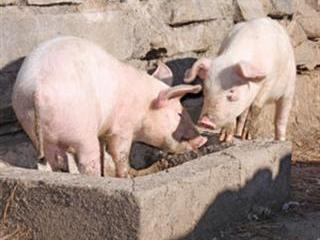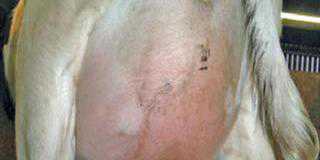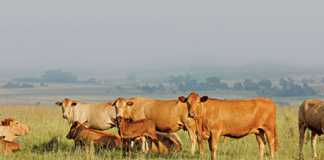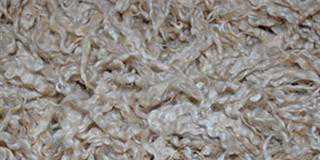
Feed can account for up to 80% of the cost of pig production. But if you feed your pigs correctly, they’ll grow well and produce good quality pork. This means higher profits for you. The various ‘production classes’ of pigs must be fed differently, and in the correct quantities. These classes include:
- Boars and pregnant sows.
- Sows with piglets.
- Young pigs, three to 10 weeks old.
- Growing pigs up to slaughter at a live weight of 60kg or 90kg.
- Feed mixtures for each of these classes must contain the right quantities of the following nutrients:
- Digestible energy (DE).
- Protein.
- Vitamins and minerals.
As we’ll see next week, four different mixtures must be used. For now, though, let’s look at feed sources.
Energy
‘Energy foods’ include grain, oils and fats. Grain should comprise 55% to 70% of the total feed mixture, providing the carbohydrates required for body functions and muscle activity. Maize is the most popular, but grain sorghum has a similar nutritional value. If you use sweet sorghum, you can substitute this for maize on an equal basis in feed mixtures.
Feed-grade wheat can also be used, but only if it’s no more than 20% more expensive than maize, otherwise your profits will be affected. Feed-grade wheat has a higher protein content than maize, so it will also cut down your protein costs. Wheat should always be coarsely ground when used as pig feed. Barley has a higher fibre content and a lower digestible energy content than other grain types. It should not comprise more than 70% of a mixture’s grain component.
Oats can also be used but in even lower quantites. It should consist of no more than 40% of a feed mixture for growing pigs and 60% or less for finishing pigs. Full-fat soya bean and sunflower seed meals both have a high oil content. This results in soft fat in pig carcasses. So, if fed with maize, these two feedstuffs must be limited in the finishing ration. Also, full-fat soya bean meal must be heat-treated to destroy a substance which inhibits growth in pigs.
Proteins
Fishmeal is the most frequently used protein source to include in feed mixtures. The next-best choice is grain by-products, such as brans; these have a higher protein content than grain and are relatively cheap. Wheat bran is the most popular. It’s usually cost-effective and has a laxative effect in pigs. If there is a shortage of wheat bran, you can use the bran, leaves, stalks or cobs from the maize plant, or lucerne.
If available at a reasonable price, hominy chop, a by-product of the maize-milling industry, can be used as a partial replacement for maize. It has a higher fat content than maize. Another two sources of plant protein are soya bean and sunflower oilcake meal. Soya bean oilcake has more protein and much less fibre than sunflower oilcake.
Vitamins and minerals
Calcium and phosphate are the two main mineral requirements. Feed lime is a good source of calcium but contains no phosphate. Monocalcium phosphate and dicalcium phosphate are popular sources of phosphate. These supplements also contain calcium, but in smaller quantities than feed lime.
Feeding ‘food by-products’
Use leftover food and waste with great caution in pig rations. Those from food-processing industries, for example, may contain excessive quantities of salt and other additives which can be harmful to pigs. Waste products usually have a high water content and therefore have very low nutritional value when fed in a wet form. They should be used only after they have been thoroughly air-dried.
To dry the waste, put it down in the sun on a flat hard area, such as cement. Remove any undesirable material such as broken glass. After it has dried, grind the waste in a hammer mill. This milled meal can then be used to replace part of the maize when mixing pig rations. Waste from harbours or airports is not permitted, as it may contain dangerous substances. And according to the law, all waste product mixtures containing raw animal product have to be boiled for 30 minutes to destroy any pathogens.
Get expert help
Feed mixture can either be bought or mixed on the farm. It is cheaper to mix it yourself, but it’s best to consult an expert before doing this. For more information, contact the South African Pork Producers’ Association on 012 361 3920, or at [email protected], or visit www.sapork.com.
Sources: Farming with Pigs (compiled by the Western Cape department of agriculture); Guide to Small-Scale Pig Farming by EH Kemm, (department of agriculture); the South African Pork Producers’ Association (www.sapork.com.












